K-12 State Education Programs
The state board of education governs state academic policy. This board is generally appointed by a state’s governor, and they hire and evaluate all school personnel. The board of education sets all education standards, including adoption of textbooks, development of standardized testing, definition of education policy and approval of district budgets.
STATE ACTIVITY WITH THE COMMON CORE STANDARDS
The following is an excerpt from the Hechinger Report – 10/15/2013
CALIFORNIA – California was previously known for its high standards, but it adopted Common Core anyway. After years of budget cuts, the state is putting $1 billion into preparation for the switch. Districts have largely been left to their own devices, though. Frustrated at the slow pace of state implementation, a handful of districts have decided to step up implementation on their own.
COLORADO – Colorado officials decided to create a hybrid between the Common Core and a set of its own new aggressive standards in 10 ![]() disciplines—including dance and music. But in a survey conducted by the Association for Supervision and Curriculum Development, Colorado educators said they are concerned about the cost and fidelity of implementing standards in multiple content areas.
disciplines—including dance and music. But in a survey conducted by the Association for Supervision and Curriculum Development, Colorado educators said they are concerned about the cost and fidelity of implementing standards in multiple content areas.
FLORIDA – Once a leading proponent of the Common Core, the state has experienced a substantial series of setbacks in the past year. In 2012, Florida decided to drop a contract with a software company that was providing quizzes and lessons connected to the Common Core, leaving educators without a resource to prepare students and teachers for the standards less than a year away from implementation. And now it is considering backing out of Common Core-aligned online tests developed by the Partnership for Assessment of Readiness for Collage and Careers (PARCC).
KENTUCKY – Kentucky is the first state to adopt the Common Core and the first state to test students using assessments aligned to those standards. As widely predicted, test scores dropped dramatically: from 76 to 48 percent in elementary school reading, for example. It’s not the first time the state has pioneered new standards and accountability. It piloted a similar education overhaul in the nineties that eventually fell apart because of implementation problems and a loss of political support. Educators around the country are watching to see if this effort will be more successful.
LOUISIANA – In November 2012, Louisiana became the first state to reject an entire slate of textbooks because they were not aligned with the Common Core. They include every math and reading textbook in the state’s most recent adoption cycle, among them bids from Houghton Mifflin Harcourt, McGraw Hill and Pearson. The state has mostly left districts to their own devices when it comes to curriculum, though, and schools are relying on a mix of teachers, consultants and curricula from other states for new lesson plans.
 NEW YORK – New York, along with Kentucky, became one of two states that have tested students according to the Common Core when it administered exams in April. Test scores dropped dramatically. The state is also unique in its creation of a set of state-sponsored Common Core curricula that schools have the option of adopting. The materials are available online for free, a move that could upend the textbook publishing industry as districts and schools elsewhere weigh whether to use them instead of traditional curricula and textbooks.
NEW YORK – New York, along with Kentucky, became one of two states that have tested students according to the Common Core when it administered exams in April. Test scores dropped dramatically. The state is also unique in its creation of a set of state-sponsored Common Core curricula that schools have the option of adopting. The materials are available online for free, a move that could upend the textbook publishing industry as districts and schools elsewhere weigh whether to use them instead of traditional curricula and textbooks.
PENNSYLVANIA – In Pennsylvania protests against the new standards prompted the state to replace the Common Core with a hybrid that includes much of  the state’s current and less demanding standards. But teachers are still mired in uncertainty because the standards aren’t set in stone until they go through Pennsylvania’s regulatory review process. Opponents of the standards on the right are still fighting to halt them in the House and Senate education committees. So are Keystone exam opponents on the left, worried about imposing high stakes on students without adequate resources to prepare them.
the state’s current and less demanding standards. But teachers are still mired in uncertainty because the standards aren’t set in stone until they go through Pennsylvania’s regulatory review process. Opponents of the standards on the right are still fighting to halt them in the House and Senate education committees. So are Keystone exam opponents on the left, worried about imposing high stakes on students without adequate resources to prepare them.
TENNESSEE – The state has faced a tsunami of change in recent years. It was one of the first to adopt and implement a value-added model for school and teacher effectiveness. It recently overhauled its teacher evaluation system. And it was one of the first two states to receive Race to the Top funding. This school year, it moves to full implementation of the Common Core. The state has provided extensive training for teachers, but it’s also facing a backlash from political opponents to the new standards.
VERMONT – Emphasizes basic arithmetic, fractions in elementary school. Focus on memorization instead of reliance on calculators. Algebra II will be required for high school juniors by 2017. Improve difficulty level of books being read. Less emphasis on how students “feel” about a book and more on analyzing content. Testing by computer is planned with results available almost “instantly.
K-12 STATE E-LEARNING EDUCATION PROGRAMS
The following was taken from the Start Educational Directors Association (SETDA) September 2012 Report: “Out of Print: Reimaging the k-12 Textbook in a Digital Age” www.setda.org
PROFILES IN STATE INSTRUCTIONAL MATERIALS LEADERSHIP
While progress is being made, American schools still have far to go in shifting from print textbooks to digital content. One current estimate puts digital  textbooks at about three percent of the education textbook market in 2011. Use of digital content is expected to grow at a year-over-year rate of more than 100 percent, but even then, according to Next is Now, the blog for a textbook distribution company, schools will have just 19.5 percent adoption by 2014 and 50 percent by 2018. The company also estimates that by 2014, when the Common Core State Standards (CCSS) are formally in place, openly licensed content will make up just 10 percent of digital content in education.
textbooks at about three percent of the education textbook market in 2011. Use of digital content is expected to grow at a year-over-year rate of more than 100 percent, but even then, according to Next is Now, the blog for a textbook distribution company, schools will have just 19.5 percent adoption by 2014 and 50 percent by 2018. The company also estimates that by 2014, when the Common Core State Standards (CCSS) are formally in place, openly licensed content will make up just 10 percent of digital content in education.
Significant policy changes are being created and implemented at the state level – in some cases with the support of the federal government – that are giving powerful momentum to the shift from print to digital content.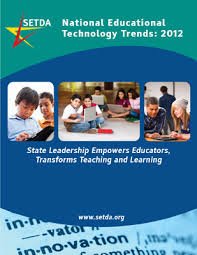
Pilot projects are taking place in hundreds of districts across the country to figure out the best combination of factors for helping digital content programs to grow more quickly. Possibly more important, significant policy changes are being created and implemented at the state level—in some cases with the support of the federal government—that are giving powerful momentum to the shift from print to digital content. In this section we profile initiatives undertaken in four states, Indiana, Texas, Utah, and Virginia, and provide thumbnail sketches of policy changes in other states.
INDIANA: ACCELERATING LOCAL INNOVATION
Traditionally, the State Board of Education in Indiana approved a list of textbooks, and districts—called “school corporations”—had to apply for a waiver to go off-list. In 2009, unhappy with submissions for social studies textbooks, the State Board of Education gave school corporations a blanket waiver to select their own materials. In addition to the freedom to select any textbook, the State Board further stipulated that schools could consider digital content and devices for delivering that content as appropriate expenses in the category of textbooks. Two years later the Indiana General Assembly passed into law an act (HB 1479) that placed into statute an expanded definition of “textbook” and removed the authority of the State Board of Education to adopt textbooks. HB 1479 places responsibility for review of print and digital curriculum on the Indiana Department of Education, which publishes the resulting reviews but doesn’t eliminate materials from consideration. It’s up to each school corporation to make its own decisions regarding textbook adoption.
Uniquely, parents in Indiana pay a rental fee for the textbooks their children use, based on the cost of the books. With the 2009 changes, school corporations were able to divert that rental money as they chose, including using it to purchase computing devices and acquire digital content, a diversion that about 11 percent of schools took advantage of during the 2010-2011 school year.
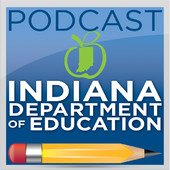 At the same time, the State Board of Education began issuing innovation grants to fund existing programs in districts that were making the shift from print materials to digital content in order to help accelerate and scale them. School corporations use the funds for a variety of projects, many involving deployment of devices and the use of digital content to a targeted grade at a specific school or for focused professional development programs.
At the same time, the State Board of Education began issuing innovation grants to fund existing programs in districts that were making the shift from print materials to digital content in order to help accelerate and scale them. School corporations use the funds for a variety of projects, many involving deployment of devices and the use of digital content to a targeted grade at a specific school or for focused professional development programs.
The state has also taken the lead in structuring events and activities to encourage innovators in the use of digital content to “find” each other. These include sites visits, webinars, meet-ups, quarterly calls, conference presentations, and set-up of professional learning networks. The state encourages frank discussion among school corporations to share what’s working and what’s not working in order to encourage the abandonment of unsuccessful programs.
As John Keller, assistant superintendent for technology in Indiana’s Department of Education, explains, “We’re not trying to use the limited funds that we have to help folks catch up. We have made it a priority to invest in corporations that are clearly demonstrating a local commitment and urgency to improvement. This is about helping people who are running fast run faster rather than helping folks catch up.”
Indiana has seen some successes worth noting. For example, in 2010 some schools using digital content noticed double-digit increases—one as high as 31 percent—in the ratio of students passing end-of-course assessments. In another pilot where there were four curriculum choices with digital content made available to participating schools, none proved more or less effective with its gains than the others, but all demonstrated measurable gains. For example, algebra assessments done after one of the pilots increased by 5.6 percent vs. a state average improvement of 2.8 percent.
This experimentation typifies another aspect of Indiana’s approach. The state recognizes its limited capacity for funding to support innovation and experimentation, so it focuses its “small-scale trials” on schools that want to go first. As Keller notes, “We’re willing to help take the financial risk out of trying new promising products so that schools that are interested in such innovations can then reallocate their own resources to purchase the service once they’ve had a chance to observe it in action in the Indiana context.”
“We’re not trying to use the limited funds that we have to help folks catch up. We have made it a priority to invest in corporations that are clearly demonstrating a local commitment and urgency to improvement. This is about helping people who are running fast run faster rather than helping folks catch up.”
—John Keller, assistant superintendent for technology, Indiana Department of Education
TEXAS: INTRODUCING FUNDING FLEXIBILITY
Texas, the first state to redefine “textbook” to encompass digital content as long ago as 1987, made a further change in 2011 to modify how instructional materials were purchased by districts. That same change, introduced by the Texas legislature, also addressed how districts could pay for the acquisition of technology and technology related services.
Previously, the state would review potential textbook materials and put those approved onto an order list. Districts could order anything they wanted from the list for as many students as they had and the state would pay for the purchase. The state also paid a technology allocation of about $30 per student to the district. The fund could be used to purchase “electronic textbooks” or other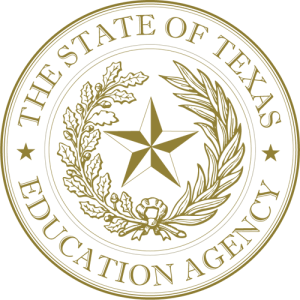 classroom technology and pay for training people involved in student learning on the use of digital content.
classroom technology and pay for training people involved in student learning on the use of digital content.
In 2011, with Senate Bill 6, the legislature changed its instructional materials funding process and eliminated the technology allotment. Districts would receive an “Instructional Materials Allotment,” which granted school districts more discretion over how they spent their dollars. The district is expected to use the allotment to pay for content—whether in printed or digital form—as well as professional development and technical support to keep the devices and networks working.
The state still reviews textbooks, both printed and digital, and districts can still order off of that approved list in order to ensure that the materials they use address the essential knowledge and skills set forth by the State Board of Education. But now the districts pay for those materials out of the funds they receive from their allotment. Currently, digital content makes up 30 percent of the orders for instructional materials by districts.
 As a result, many districts are choosing to purchase classroom sets of textbooks rather than textbooks for each student. Because the legislation was approved so close to the adoption time, nearly all districts chose state vetted materials. However, the Texas Education Agency expects that with time districts will increasingly select non-state adopted materials and invest the funds in new technology and related services.
As a result, many districts are choosing to purchase classroom sets of textbooks rather than textbooks for each student. Because the legislation was approved so close to the adoption time, nearly all districts chose state vetted materials. However, the Texas Education Agency expects that with time districts will increasingly select non-state adopted materials and invest the funds in new technology and related services.
The state also set aside $10 million for a technology lending program, designed to help districts provide computing devices to students who had no access at home.
A point to note: Beyond the adoption of digital content in the classroom, schools, districts, and states are finding they need some way to house and distribute the content of all kinds and to foster collaborations among educators. To address this aspect of digital content, the Texas Education Agency introduced “Project Share”, an online community for teachers to collaborate, research, and share resources. This community is available free to all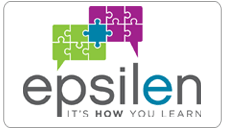 educators in the state. The TEA contracted with The New York Times Knowledge Network and Epsilen, a learning management system and e-portfolio development company. Texas is using the “Project Share”portal to accumulate digital content, organize it, and distribute it, and to encourage teachers to use digital content. Through a login process, the system customizes access to resources for 300,000 teachers and administrators and 4 million students across the state.
educators in the state. The TEA contracted with The New York Times Knowledge Network and Epsilen, a learning management system and e-portfolio development company. Texas is using the “Project Share”portal to accumulate digital content, organize it, and distribute it, and to encourage teachers to use digital content. Through a login process, the system customizes access to resources for 300,000 teachers and administrators and 4 million students across the state.
Lincoln Junior High
Lincoln Junior High in Indiana adopted laptops in 2010 for all 580 students. To cover the cost, the school received an initial grant to implement content for math online and held off on adopting textbooks in math and social studies, which cut textbook costs in half, according to principal Dan Funston.
Shortly after getting their computers, according to coverage in the local newspaper, “Students already were making movies and videos with iLife, a suite of software programs, or looking for interactive adventures in math through http://coolmath.com.”
 Calling digital textbooks “the future of education,” Superintendent Dan Tyree notes that they’re “easier to update than a printed textbook and they’re cheaper to produce.”
Calling digital textbooks “the future of education,” Superintendent Dan Tyree notes that they’re “easier to update than a printed textbook and they’re cheaper to produce.”
Besides the New York Times Content Repository, the portal provides programming from a number of other resources, including PBS, McDonald Observatory, NASA, and the Smithsonian. The state is also using “Project Share” to house electronic copies of instructional materials that have been adopted in the state, primarily digital versions of printed textbooks. To gain access to the content, teachers log in and find it online. That’s where they also gain access to professional development materials, including text, video, and audio. All this content is free to school districts.
The philosophy followed by the state is to clear hurdles standing in the way of local adoption and let individual districts and educators make decisions. Districts are free to spend their content and technology funds as they decide, as long as those investments fit the “state-managed criteria” and are specifically tied to student learning. Teachers are given resources for self-help in becoming conversant with new methods of instruction and the use of digital content in the classroom. “Commercial digital content” is licensed statewide for use by educators and students. “Project Share” also may eventually become a major repository of open digital content accessible by educators inside and outside the state.
UTAH: LEVERAGING OPEN CONTENT
If there’s a geographic center to the K-12 open educational resource (OER) movement in this country, it’s surely the state of Utah. Utah’s approach to instructional materials is for the state to make recommendations but to leave ultimate decision making to the district. To that end, in January 2012 the Utah Office of Education announced that it would support development of “open textbooks” in key areas, including language arts, science, and math. The Office of Education also said it would encourage districts and schools throughout the state to consider adopting them beginning in fall 2012. That encompasses some 275,000 6th through 12th graders in public schools.
2012. That encompasses some 275,000 6th through 12th graders in public schools.
The state of Utah sets statewide technology goals, such as a 1-to-1 ratio of computer/tablet/handheld device to student and “adequate bandwidth and network connections for reliable student and educator access,” to guide policymakers and educators. The Utah Instructional Materials Center recommends textbooks and other forms of curriculum to the Utah State Office of Education. The result of that work appears in an online state database that educators can sort by publisher, subject, category, course, and adoption action, such as “Recommended Teacher Resource.” However, neither body mandates the use of the content in its public schools. The state’s adoption process is to provide a general list of approved materials, but ultimate decision-making rests with local education agencies.
If there’s a geographic center to the K-12 open educational resource movement in this country, it’s surely the state of Utah.
In 2001 the Utah State Textbook Commission changed its name to the Utah State Instructional Materials Commission to reflect its interest in emerging digital and multimedia formats for these resources. It has been evaluating materials in these formats through an annual review process since that time. That process of state recommendation and local decision-making will be maintained as Utah shifts into the use of digital and open content.
The decision to promote OER on such a broad scale comes after two years of a pilot project in creation and use of OER textbooks for science. The development of these textbooks was led by David Wiley, a faculty member in Brigham Young University’s School of Education. Each pilot was conducted by the “Utah Open Textbook Project”, a partnership involving BYU, Nebo School District, and the Office of Education.
 The content of the textbooks will be produced by Utah educators and will be housed on the “CK-12 platform.” The CK-12 Foundation is a nonprofit specifically founded to produce and support free and open source K-12 materials aligned to state standards. All textbooks—called “flexbooks”— available through CK-12 are free, available online, and customizable; they’re licensed under the “Creative Commons Attribution/Non-Commercial/Share Alike 3.0 Unported (CC-by-NC-SA) License.”
The content of the textbooks will be produced by Utah educators and will be housed on the “CK-12 platform.” The CK-12 Foundation is a nonprofit specifically founded to produce and support free and open source K-12 materials aligned to state standards. All textbooks—called “flexbooks”— available through CK-12 are free, available online, and customizable; they’re licensed under the “Creative Commons Attribution/Non-Commercial/Share Alike 3.0 Unported (CC-by-NC-SA) License.”
Currently, the work of CK-12 focuses on middle school and high school “Science, Technology, Engineering, and Math” (STEM) subjects; but Utah will be using the platform for support in K-6 and language arts as well.
The Open Textbook Project envisions a district paying its best teachers to work together revising and adapting the initial open textbook to meet specific needs. This custom book would contain a teacher’s edition, instructional supports, explanations, text, practice sets, and assessments. Each summer teachers would invest a small amount of additional time to update the book as needed. As each new version is readied, the district could distribute the digital content in common standard formats that include PDF, ePub, or HTML; or the district could choose to print out a sufficient quantity on demand and give each student a copy that can be written in, highlighted, and kept, which makes the transition easier for those districts where student computing device availability is 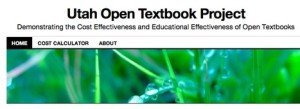 limited.
limited.
The cost comparison is dramatic. The Open Textbook Project provides a calculator that allows the district to estimate its savings compared to its current textbook scenario. For example, if a district is spending $80 per printed textbook for 5,000 students and uses it for six years, that’s an investment of about $400,000 or about $13.33 per student per year. Adopting open educational resources, paying a team of four teachers to update the material each year at $30 per hour for a total of 60 hours, and adding printing would cost about $152,000 or $5 per student per year.
Could a $5 textbook really compare to an $80 one? Wiley and his fellow researchers found in a limited experiment that Utah high school students learned the same amount of science in classes using the open textbooks as they did in classes using the traditional textbooks. Beyond cost considerations, the research team noted that “OER [allows] teachers and students to remix content in locally meaningful ways, to share a variety of types of learning resources, and to enable the best resources for teaching a specific topic to be more easily found.”
Adopting open educational resources, paying a team of four teachers to update the material each year at $30 per hour for a total of 60 hours, and adding printing would cost about $152,000 or $5 per student per year.
VIRGINIA: THINKING BEYOND TEXTBOOKS
Discussion about the broad adoption of digital content can’t be separated from consideration of technology upon which to use it: Teachers and students need ready access to technology devices in order to take advantage of its benefits. But what drives schools and districts to invest in devices in the first place may not be digital content but something else. That was the case in Virginia, which has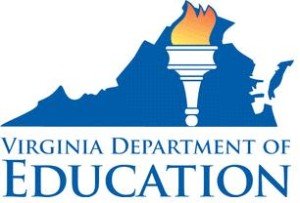 a long history of fostering innovation in the use of educational technology. In 2000, for example, the state began shifting its high-stakes assessments (known as “Standards of Learning”) online. In 2011 it issued 2.1 million tests online—twice as many as any other state.
a long history of fostering innovation in the use of educational technology. In 2000, for example, the state began shifting its high-stakes assessments (known as “Standards of Learning”) online. In 2011 it issued 2.1 million tests online—twice as many as any other state.
In 2004, the state launched “Virtual Virginia,” an online program to deliver advanced placement and other courses to students. In 2005, it created a network of instructional technologists to help teachers integrate technology into their classrooms more effectively. The Virginia State Department of Education was an early contributor to iTunesU. It also collaborated with the Professor Garfield Foundation to create digital resources for the “Infinite Learning Lab,” to help students with life skills, such as peer pressure, self-esteem, and cyberbullying, as well as language arts topics.
In 2008 the Department undertook a number of initiatives to explore the use of wireless mobile technologies to support and enhance teaching and learning. Those included multiple programs that tested the use of iPod touch devices and laptops.
In 2009 Virginia adopted its first digital textbook for high school physics. Titled, “FlexBook: CK-12 Physics, 21st Century—A Compilation of Contemporary and Emerging Technologies” and published under an open license with the support of the CK-12 Foundation, the book is available to any teacher to use, share, and adapt at no cost. The adoption occurred after a team of scientists and engineers 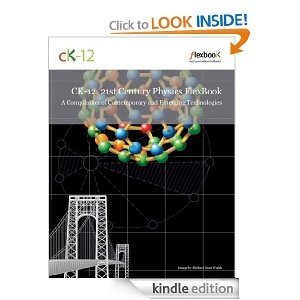 concluded that the state’s existing instructional materials were very dated. The textbooks then in use talked about cathode ray tubes, for example, with no mention of newer technologies, such as LED, LCD, or plasma displays. Neither organic chemistry nor nano-science were referenced.
concluded that the state’s existing instructional materials were very dated. The textbooks then in use talked about cathode ray tubes, for example, with no mention of newer technologies, such as LED, LCD, or plasma displays. Neither organic chemistry nor nano-science were referenced.
Those earlier initiatives have helped districts address the infrastructure needs of schools, enabling them to support the use of digital content. And they have helped educators become more comfortable and familiar with the use of technology in learning, preparing them for the fuller integration of digital textbooks into their daily curriculum.
In 2010 “Beyond Textbooks” was launched to access, organize, and deliver high-quality content using a variety of tools and platforms (including the iPad) and to understand the conditions necessary for successful implementation in schools. Fifteen classrooms provided iPads to their students. Then the state invited publishers, content providers, technology companies, and others to submit resources for use at no cost.38 As Office of Educational Technology Director Tammy McGraw explains, this pilot effort was unique in that it was just as much an experimental process for the providers as it was for schools. Participants worked aggressively with participating companies to figure out how digital content could best exploit the new platform and helped shaped what was ultimately delivered.
Discussion about the broad adoption of digital content can’t be separated from consideration of technology upon which to use it: Teachers and students need ready access to technology devices in order to take advantage of its benefits.
Henrico County Public Schools
In order to encourage development of lesson plans and digital content by its own teachers, Virginia’s Henrico County Public Schools each year hosts an annual competition in which it solicits submissions to “Henrico 21,” a public digital repository. The submission must have multiple components: a lesson plan, a rubric, student handouts, links to essential resources, and a student work sample created through the lesson. Lessons have to be vetted first at the school level through a site-based team review. That same team also provides feedback to teachers and makes recommendations for moving lessons onto the division level. The content added to Henrico 21 is licensed under a “Creative Commons license,” which allows it to be used by other teachers, schools, and districts inside and outside the state.
Currently, the site hosts between 200 and 300 lessons. They can be searched on by grade level, subject, tag, winner standing, application to development of a 21st century classroom, and other criteria. Individual entries can be star rated and commented on.
Winning entries generate recognition for the teachers who submit the lessons. They’re publicly acknowledged as “experts” at a special ceremony, which is funded through donations and grants from vendors and nonprofit organizations.
What the division aspires to is building a repository that allows an instructor to access any lesson from any source—commercial or internally made. That in turn would be tied into the “student information system,” to enable a teacher to identify specific digital content that would be most appropriate to any given student with a specific learning gap.
Henry County Schools, one of the participating districts—or “divisions” as they’re called in Virginia—started with 40 tablets used in 2 classes and has since grown usage to 3,000 students. Now every third, fourth, and fifth grader has access to a tablet at school and at home. The device contains digital math and social studies curriculum as well as other apps selected by individual teachers. Although the initial investment for the program came primarily from grants and stimulus funds, the division itself has invested its own resources to expand the initiative based on the student success it was experiencing.
 Most recently, in August 2012, the Department of Education teamed up with public and private organizations to release two “interactive digital textbooks” for teachers to consider using in required high school courses on finance and economics. The “books” contain 2,600 pages worth of digital content: graphic-novel scenarios, interactive activities, graphing tools, embedded review questions, and self-grading quarterly and final assessments. To recoup development costs, the Department of Education is selling iPad editions of the books in the Apple iBookstore; however, the state is also making free PDF versions available, which lack the interactive elements.
Most recently, in August 2012, the Department of Education teamed up with public and private organizations to release two “interactive digital textbooks” for teachers to consider using in required high school courses on finance and economics. The “books” contain 2,600 pages worth of digital content: graphic-novel scenarios, interactive activities, graphing tools, embedded review questions, and self-grading quarterly and final assessments. To recoup development costs, the Department of Education is selling iPad editions of the books in the Apple iBookstore; however, the state is also making free PDF versions available, which lack the interactive elements.
Like the state of Indiana, Virginia is using funding judiciously to help seed new projects in the digital content space. But unlike Indiana, the money isn’t going only to those schools that are already on a fast-track.
“These pilots help shape better offerings,” McGraw says. “We don’t have all the answers, but I think there is tremendous value in establishing pilot projects that spur innovation and help us better understand the technological, social, and policy challenges that schools face as they transition to digital content. Schools clearly benefit from what we learn, but I think we also help shape better products and resources for schools.”
“I think there is tremendous value in establishing pilot projects that spur innovation and help us better understand the technological, social, and policy challenges that schools face as they transition to digital content,” Tammy McGraw, Office of Educational Technology Director.
ACTIONS IN OTHER STATES
By no means are these the only states testing out new digital content projects or fine-tuning existing programs. Pilots exist in almost every state. Although only some of the initiatives may appear bold, multiple government and education agencies, foundations, nonprofits, academics, private enterprises, and individuals are pushing the work forward from multiple sides.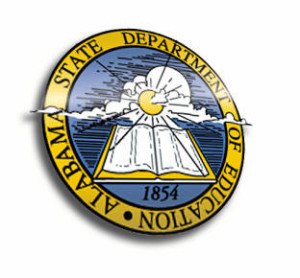
A high-level look at select actions in other states can be found on the pages below and is followed by a summary.
ALABAMA: The legislature has passed a bill to provide computing devices and digital textbooks to high school students, to be paid for with $100 million in bonds. While the bill passed and was signed by the governor, funding has been delayed until an advisory committee submits a plan or its implementation. Funding is expected in 2013.
ARKANSAS: In March 2011 Act 288 amended Arkansas Code 6-21-403 to include digital resources, alongside textbooks and other instructional materials purchased with state funds, to be made available to students.41
CALIFORNIA: In May 2009 then-Governor Arnold Schwarzenegger implemented the “Free Digital Textbook Initiative,” which called for submissions of free, OER textbooks for high school math and science. The California Learning Resource Network coordinates the review of digital content for adherence to state standards.
LOS ANGELES SCHOOLS LEADER WANTS TO SLOW IPAD ROLLOUT
By John Rogers
Associated Press – 10/16/2013
LOS ANGELES — The leader of the nation’s second-largest school district moved Tuesday to put the brakes on an ambitious $1 billion plan to place iPads in the hands of every student after some of the first to get them used the devices to tweet, text and play games rather than study.
Under a revised plan, all 650,000 students in the Los Angeles Unified School District would have iPads to use by the end of 2015 rather than the original target date of 2014. Principals and certified teachers at all district campuses would have the extra time to attend orientation programs on the use of the devices.
“I am hopeful that this revised plan meets the concerns of board members over how best to provide our students with the technology they need to excel in the classroom and succeed in their careers,” Superintendent John Deasy said.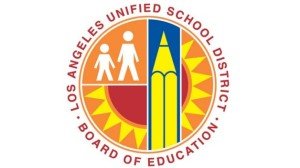
Concerns were expressed last month that the original target date was too ambitious after more than 300 students at three of the first campuses to receive iPads quickly cracked their security settings and began surfing the Web.
Deasy proposes handing out the next batch by April to three dozen of the district’s campuses most lacking in technology. Other schools would get them between August 2014 and December 2015. Deasy said it’s important to get the tablets to students quickly because computerized state testing is being introduced in 2015
TORLAKSON BACKS $9B BOND FOR K-12 TECHNOLOGY
By Kerry Benefield
The Press Democrat 10/23/2013
California’s state schools chief is backing a $9 billion bond measure in 2014 to build up the technology infrastructure at K-12 campuses.
State Superintendent Tom Torlakson said Tuesday that California’s schools must be prepared and outfitted to handle a dramatically new standardized testing system that eventually will require all students to be tested using computers rather than pencils and fill-in-the-bubble sheets. “There are big issues with bandwidth, Internet-connecting devices,” he said.
Bond money would not be used for devices like iPads, he said, but would focus on expanding and improving connectivity for all campuses. Assemblywoman Joan Buchanan, D-Alamo, is expected to sponsor the bill.
Privately funded polling to test voters’ appetite for school spending is expected to be conducted in the coming months. Voters in 2006 approved a $10.4 billion school bond package, including $7.3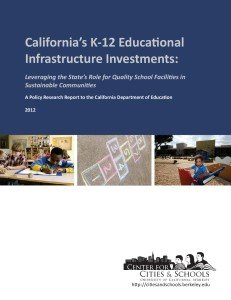 billion for capital projects for kindergarten through 12th grades. Of those funds, $318 million remains unreserved for projects in six categories including modernization, new construction and career-technical facilities.
billion for capital projects for kindergarten through 12th grades. Of those funds, $318 million remains unreserved for projects in six categories including modernization, new construction and career-technical facilities.
Last year, voters approved Proposition 30, temporarily increasing the state sales tax by a quarter-cent and income taxes on the wealthy by 1 percent to 3 percent. The move staved off what Gov. Jerry Brown said would have been $4.8 billion in cuts to K-12 education last year but did not infuse new money into education coffers.
“Some people thought Prop. 30 cured everything,” Torlakson said. California’s third- through 11th graders are set to test the new standardized testing system this spring. California bucked demands of U.S. Secretary of Education Arne Duncan when lawmakers this month approved the suspension of the Standardized Testing and Reporting, or STAR, program — a major component of the federal accountability system.
Instead, students will participate in a field test of the Smarter Balanced exam that is being called a “test of the test” and will highlight how prepared schools are to give the exam entirely on computers. While all tests must be administered on computers next spring, paper-and-pencil exams will be available in the three subsequent years to schools that can prove their technology is inadequate to handle the administration of the test.
“Testing the test” next spring will let school administrators know whether they truly are prepared for spring 2015, when official test results will be released and counted. “We don’t want it to be like what happened in many states with the Affordable Care Act,” Torlakson said of the rocky opening weeks of health care exchanges. Online registration has been riddled with problems.
COLORADO: Vail School District in Arizona, which has an initiative called “Beyond Textbooks,” that’s growing statewide as other districts adopt the program, and features a quickly expanding repository of digital content created and shared by the teachers who participate in the program. Content is vetted by “Beyond Textbooks” staff for potential copyright issues, formatting problems, congruency to standards, and level of rigor. Vail has used the “Beyond Textbooks” approach to increase student achievement in math and reading from levels near or below state averages prior to the start of the program to pass rates that are now consistently 20 percent or more above state averages and greater than 90 percent year after year at most grade levels.
FLORIDA: The state has begun a five-year transition to digital instructional materials. By the 2015-2016 academic year districts are required to be ready to expend at least half of their instructional materials allocation on state-adopted digital materials; districts retain flexibility in how they spend the remainder of their allocations. State legislation also addresses multiple aspects of the transition: development and implementation of digital content for students in grades 6 through 12; designation of pilot programs for the transition to digital content; and electronic review and evaluation of instructional materials meant for adoption (and even prohibits the submission of hardcopy samples).
GEORGIA: After enacting legislation to allow schools to use textbook funds to purchase hardware to support digital content, in 2010 the state of Georgia spent $13 million to begin pilots to test the use of digital content. Legislation was passed in 2012 to allow students to maximize online learning opportunities by taking online courses for no charge. This legislation also allows districts to keep their “full-time equivalent” funds and pay for an online course through the Georgia Virtual School or any other state-approved online provider where the cost doesn’t exceed $250 per half unit of credit.
![]() IDAHO: “Students Come First,” Senate Bill 1184, passed this year to create a funding formula for instructional technology and professional development for teachers. While implementation issues have arisen, the intent of the law is that all high school teachers will be outfitted with mobile devices in 2012-2013; all high school students will have them by 2015-2016. The state will cover device expenses; districts will determine their use. An Idaho Department of Education taskforce has recommended the use of digital OER through several services, including Khan Academy and Curriki.
IDAHO: “Students Come First,” Senate Bill 1184, passed this year to create a funding formula for instructional technology and professional development for teachers. While implementation issues have arisen, the intent of the law is that all high school teachers will be outfitted with mobile devices in 2012-2013; all high school students will have them by 2015-2016. The state will cover device expenses; districts will determine their use. An Idaho Department of Education taskforce has recommended the use of digital OER through several services, including Khan Academy and Curriki.
ILLINOIS: In 2010 legislation was enacted to expand the definition of textbooks to allow for the use of digital content and the equipment necessary to use it. Senate Bill 3547 also expanded textbook funding sources to include those same materials. Along with eight other states, Illinois is participating in a Shared Learning Collaborative project to implement a systematic approach to curriculum resource alignment with CCSS and focused on personalizing learning for students. The goal: to link instructional data to “high-quality and diverse sets of curricular resources, so each student gets what he or she needs most at that moment in time.”
funding sources to include those same materials. Along with eight other states, Illinois is participating in a Shared Learning Collaborative project to implement a systematic approach to curriculum resource alignment with CCSS and focused on personalizing learning for students. The goal: to link instructional data to “high-quality and diverse sets of curricular resources, so each student gets what he or she needs most at that moment in time.”
IOWA: Senate File 2178, signed into law on March 22, 2010, expands the definition of “textbooks” to include books, electronic materials and laptop computers, or other portable personal computing devices. New policy has changed the definition of a textbook to include digital content and to allow textbook funds to be used to purchase technology.
LOUISIANA: Since 1999, the state definition of textbook has included “electronic media.” However, with the passage of SB533 in 2010, the State Board of Education was directed to make every effort to ensure that electronic versions are available for every title it approves in the textbook adoption process. In addition, the Department of Education was directed to clearly communicate its desire to increase the availability and accessibility of electronic textbooks and instructional materials.
In April 2012, dated policy language that specifies districts expend “90% of the state textbook allocation on state approved material” was removed (There has been no state textbook allocation since 1992-1993). The policy change doesn’t increase the amount of funding to local education agencies (LEAs), but it does empower local budgetary decisions through greater flexibility in spending.
MAINE: In 2002 the state started a comprehensive middle school 1-to-1 program; about 55 percent of high schools in the state were added in 2009. In 2011 related legislation, Title 20-A, was passed, which accomplished two ends. First, it called for development of a program of technical assistance, including professional development and training, for educators to learn how to use online learning resources, including OER. Second, the law created a digital literacy fund for covering the expenses of developing online learning resources and building a new clearinghouse for information on the use of online learning resources.
MARYLAND: State law recognizes the importance of high quality digital content for use in schools. The “MD-K12 Digital Library Program,” a partnership of the State Department of Education with every school district in the state and about 100 nonpublic schools, negotiates statewide pricing for the purchase of digital content to provide quality resources for students at all grade levels.
 NEBRASKA: In mid-August 2012 the Department of Education launched the “NeBook Project,” a partnership of schools, state, and nonprofit agencies to create digital books, assess their quality, and share them through a new virtual library that will also host content from multiple resources, including PBS and the National Archives. The digital books will be created on Apple’s “iBook Author” for viewing on the iPad; they’ll also be available in PDF format.
NEBRASKA: In mid-August 2012 the Department of Education launched the “NeBook Project,” a partnership of schools, state, and nonprofit agencies to create digital books, assess their quality, and share them through a new virtual library that will also host content from multiple resources, including PBS and the National Archives. The digital books will be created on Apple’s “iBook Author” for viewing on the iPad; they’ll also be available in PDF format.
NEW MEXICO: HB 310, passed in 2011, requires publishers to provide instructional material in an electronic format for e-readers, beginning with the 2013-2014 school year.
NEW YORK: Sections 701, 751, and 753 of New York State Education Law were amended for 2011-2012 to provide flexibility in the use of instructional materials  aids. These included textbooks, library materials, computer software, and instructional computer hardware. The new provisions maximum allocation in any one of the areas, the excess expense over the maximum allocation can be designated as expense for aid in one or more of the other categories, even if the district didn’t actually make purchases in those categories. New York also has created “Requests for Proposals” for instructional and professional development materials for Common Core-aligned English language arts and Mathematics content. In the RFP there is a preference for the materials to be licensed under a “Creative Commons license.”
aids. These included textbooks, library materials, computer software, and instructional computer hardware. The new provisions maximum allocation in any one of the areas, the excess expense over the maximum allocation can be designated as expense for aid in one or more of the other categories, even if the district didn’t actually make purchases in those categories. New York also has created “Requests for Proposals” for instructional and professional development materials for Common Core-aligned English language arts and Mathematics content. In the RFP there is a preference for the materials to be licensed under a “Creative Commons license.”
NORTH CAROLINA: The North Carolina State eLearning Commission in 2011 and 2012 put forth a set of recommendations to transition to digital resources as the primary form of educational materials in K-12 schools over the next five years, recommendations that have been approved by the governor and the State Board of Education. The Commission promoted starting with math and English language arts as part of the state’s move to the CCSS, including working with other states on development of OER. The proposed plan builds upon the state’s commitment to building a “K-12 cloud computer infrastructure” to support its digital initiatives.
OHIO: The state’s administrative code 3301-92-01 refers to “textbooks and instructional materials,” including instructional software and computer hardware. Code 3329.08 references textbooks and “electronic textbooks.” In March 2011, HB 30 repealed a textbook “set-aside fund” requirement specified in Section 3315.17 for its public schools. With the repeal, public districts are no longer required to have such a fund. Also, language in HB 153, which applies specifically to nonpublic schools, was updated to encompass similar definitions and regulations, including the term, “electronic textbook.”
WASHINGTON: The 2012 state legislature passed Engrossed Second Substitute House Bill (E2SHB) 2337, which provides $250,000 to the Office of Superintendent of Public Instruction (OSPI) related to developing a library of high-quality, openly licensed K-12 educational courseware that is aligned with the newly adopted CCSS for English language arts and mathematics.
WEST VIRGINIA: SB 631, passed in 2010, replaced the terms “textbooks,” “instructional materials,” and “learning technologies” with “instructional resources” and revised the definition to include digital content. In 2011 the West Virginia Department of Education implemented a two-year hiatus on the purchase of social studies textbooks and reallocated the funds to educational technology infrastructure upgrades as part of a transition to the use of digital content.
LESSONS LEARNED
These efforts differ in scope and detail, but they all encourage the movement to more digital content in schools. A first step is to include digital content as a part of the definition of instructional resources or textbooks. While minimal, that step is necessary. Other states have freed up the funding mechanisms to include not only digital content, but also the technology necessary to take  advantage of the digital resources, or otherwise provided greater flexibility in the use of instructional materials funding. A few states focus on finding and leveraging OER. A few states have even larger visions that put digital content at the core of their effort. In other words, a continuum of policy steps exists on the way to fully embracing digital content.
advantage of the digital resources, or otherwise provided greater flexibility in the use of instructional materials funding. A few states focus on finding and leveraging OER. A few states have even larger visions that put digital content at the core of their effort. In other words, a continuum of policy steps exists on the way to fully embracing digital content.
Policy change can be initiated from many places in the overall state educational structure. These states profiled here, from very different regions of the country, are driving a strong push from print to digital content and, particularly in the case of Utah, toward OER, yet there are differences among their efforts. One notable difference is the impetus for the changes from a traditional approach to one that is more innovative:
• In Indiana, the change was initiated by a State Board of Education unhappy with the social studies materials that had been proposed. The State Board changed the definition of a textbook to include digital content, allowed textbook funds to be used to purchase technology, and encouraged districts to use a waiver process to access that capability. The Superintendent backed that effort and even granted districts a blanket waiver.
• In Texas, the legislature has taken the lead in implementing changes since it first revised the law to allow digital content in 1987.
• In Virginia, the Department of Education has taken the lead in many of the projects, although the physics “FlexBook” was a joint project between the governor’s office and the Department of Education.
• In Utah, the State Office of Education has played a lead role, but it was based on the research and leadership from a faculty member from Brigham Young University.
A first step is to include digital content as a part of the definition of instructional resources or textbooks.
In all cases, the legislature has ultimately backed the changes, either by changing the laws to support the initiatives or by funding them—and many also have benefited from the support of the governor. Indeed, the point being made here is that there is no one best way to implement and drive change in this area, but that state level leadership is critical for progress.
More important than the differences are the similarities among these leading states and the real lessons to be learned.
Strong state leadership. As noted above, the impetus for change can come from anywhere at the state level, but the message of the desire and need for change was strong in these states and coordinated among various branches.
A culture of innovation. Each of the states profiled is trying to foster a culture of innovation through different mechanisms. Virginia is seeding a variety of projects from school districts and working with the private sector. Indiana is focusing on those districts willing to take risks so they can go even further, “helping people who are running fast run faster…”
Increased flexibility in funding. All states had an eye on funding and the most common approach for easing districts’ financial burden was to provide greater flexibility in how they used their dollars. Also, as illustrated throughout the state thumbnail sketches, the flexibility in funding broadens the definition of textbooks to include digital content; many states allow districts to use 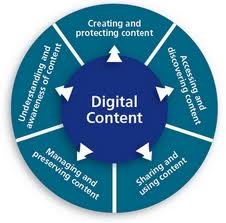 “textbook funds” to purchase the technology needed to access the digital content.
“textbook funds” to purchase the technology needed to access the digital content.
Increased flexibility in content choice. In many states, the so-called adoption states, control of the primary materials used for instruction has rested at the state level. Both Texas and Indiana have changed their role to one similar to Utah’s, producing an advisory list that districts can use for advice but aren’t compelled to follow. (Although Indiana has not loosened the reins completely; reading content still must be state-approved for some school corporations.)
Strong implementation. In some cases, the best laid plans for policy go awry in implementation. These states have taken extra steps to ensure that the policies passed at the state level get supported so that they’re implemented at the local level. Texas and Indiana have both set up mechanisms for teachers and other innovators to share and support each other. In Indiana it’s a series of calls, webinars, and professional learning networks. In Texas it’s leadership at the local level and a statewide, online community in Project Share.
SETDA TO LAUNCH STATE EDUCATION POLICY CENTER
In fall 2012, SETDA will launch the State Education Policy Center (SEPC), a database of state policies related to education and technology. One of the first topics included in SEPC is digital content. Once the resource has been made public, SEPC users will be able to view all policies related to digital content on a state-by-state basis. They’ll be able to select a sub-topic such as “definition of textbook” and view the definitions of textbooks in all states.
There is no one best way to implement and drive change in this area, but state level leadership is critical to progress.

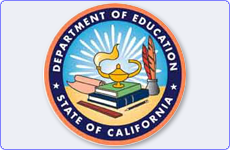

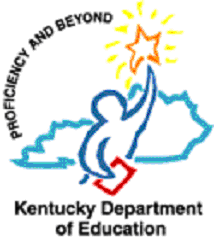
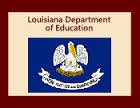


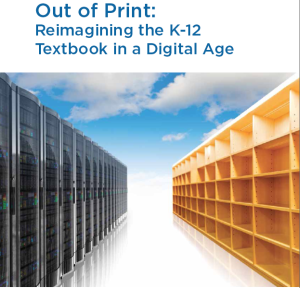

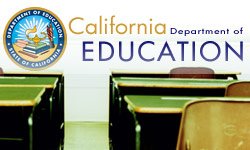
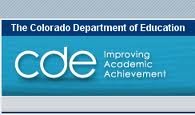
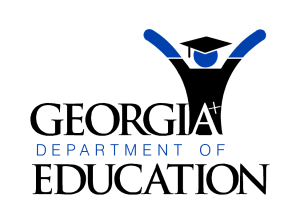

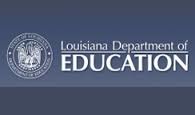
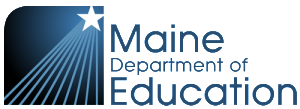
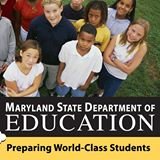
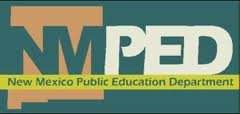
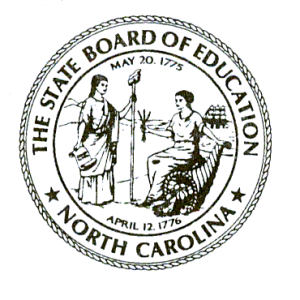
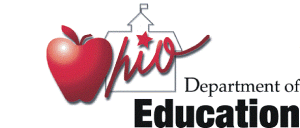
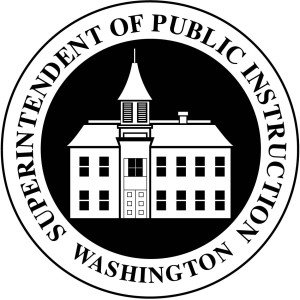
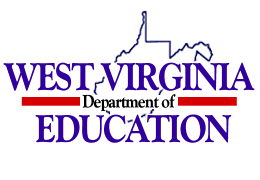
Recent Comments